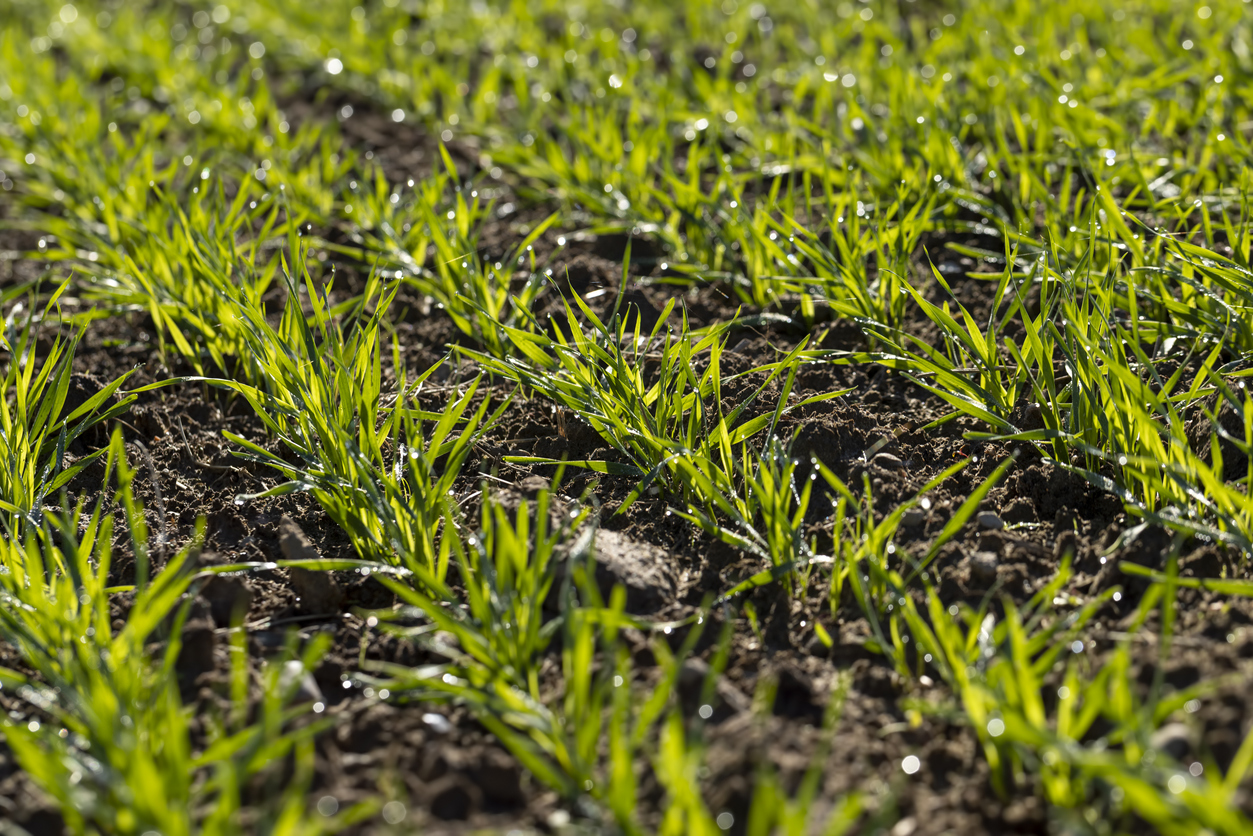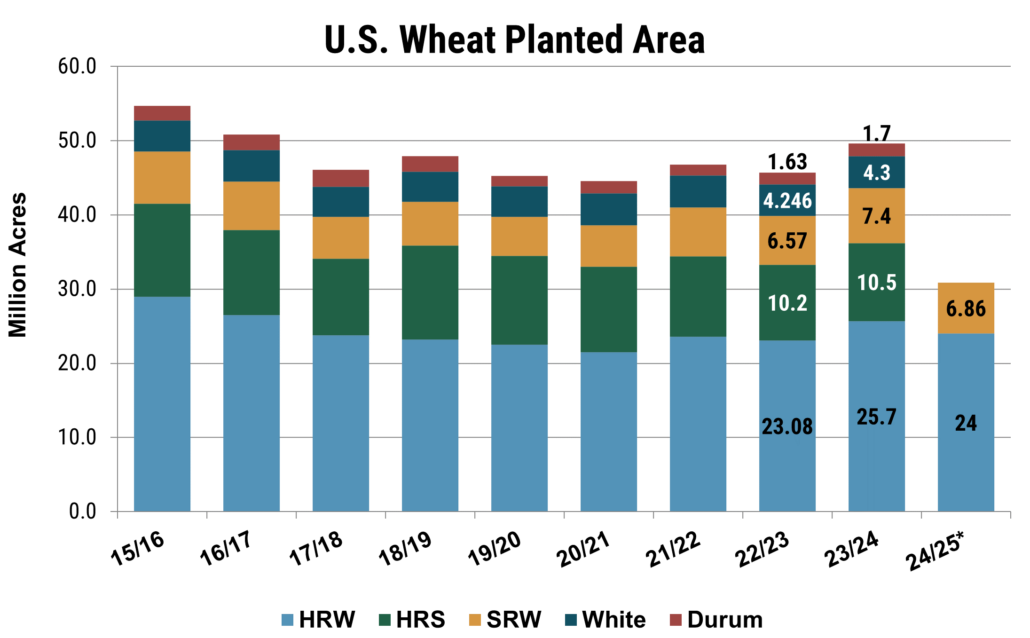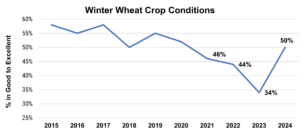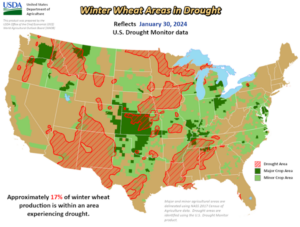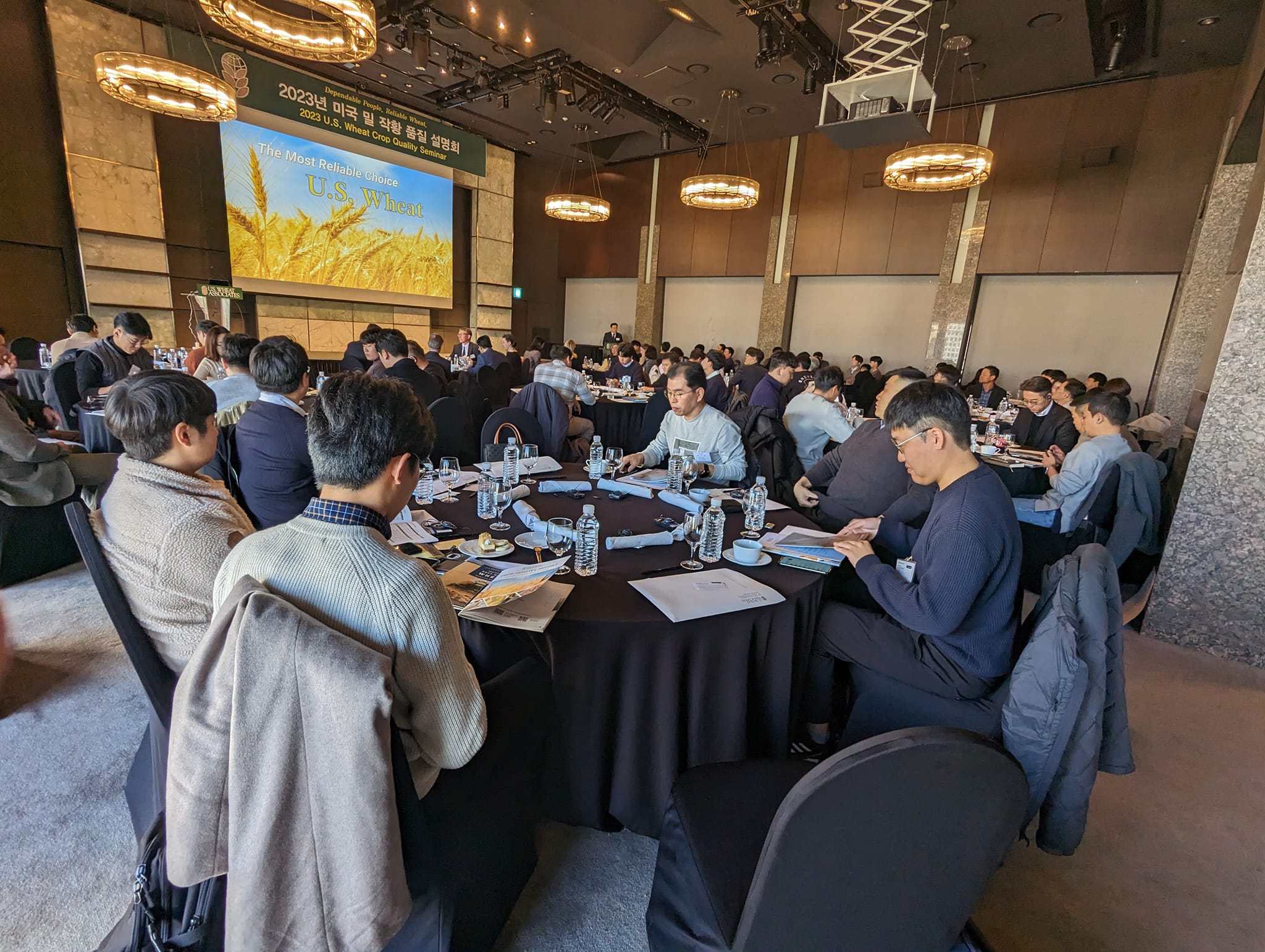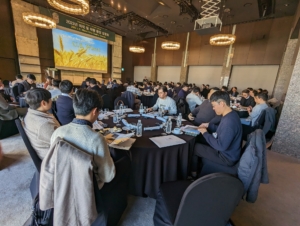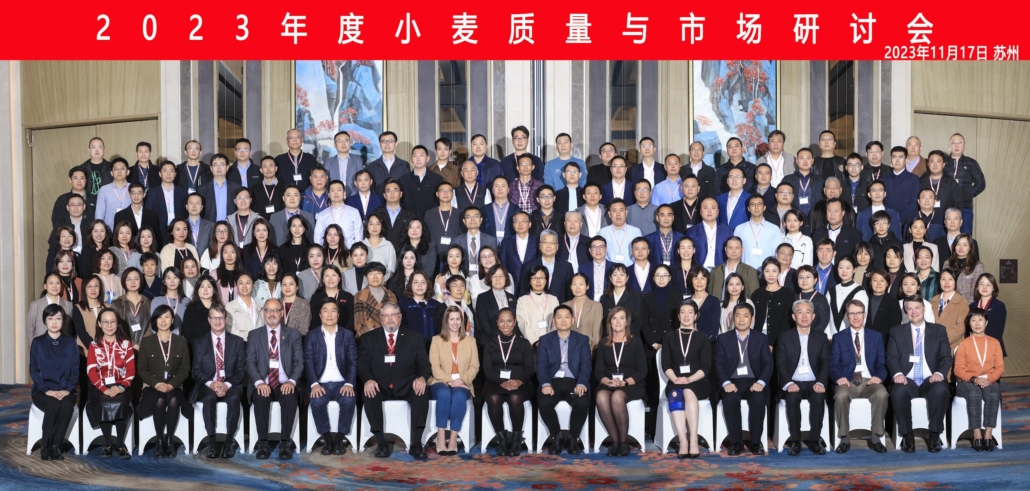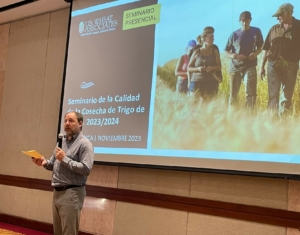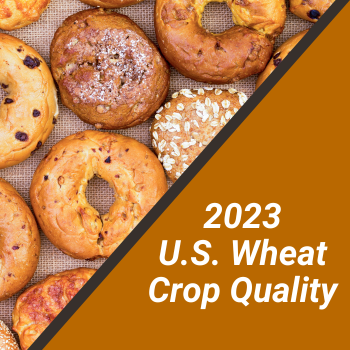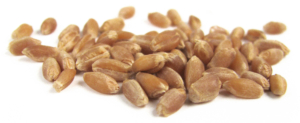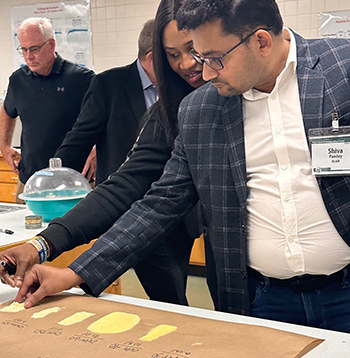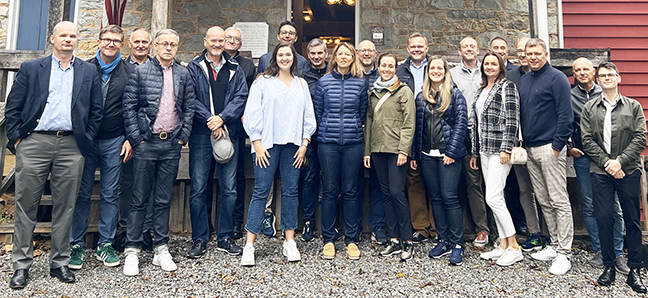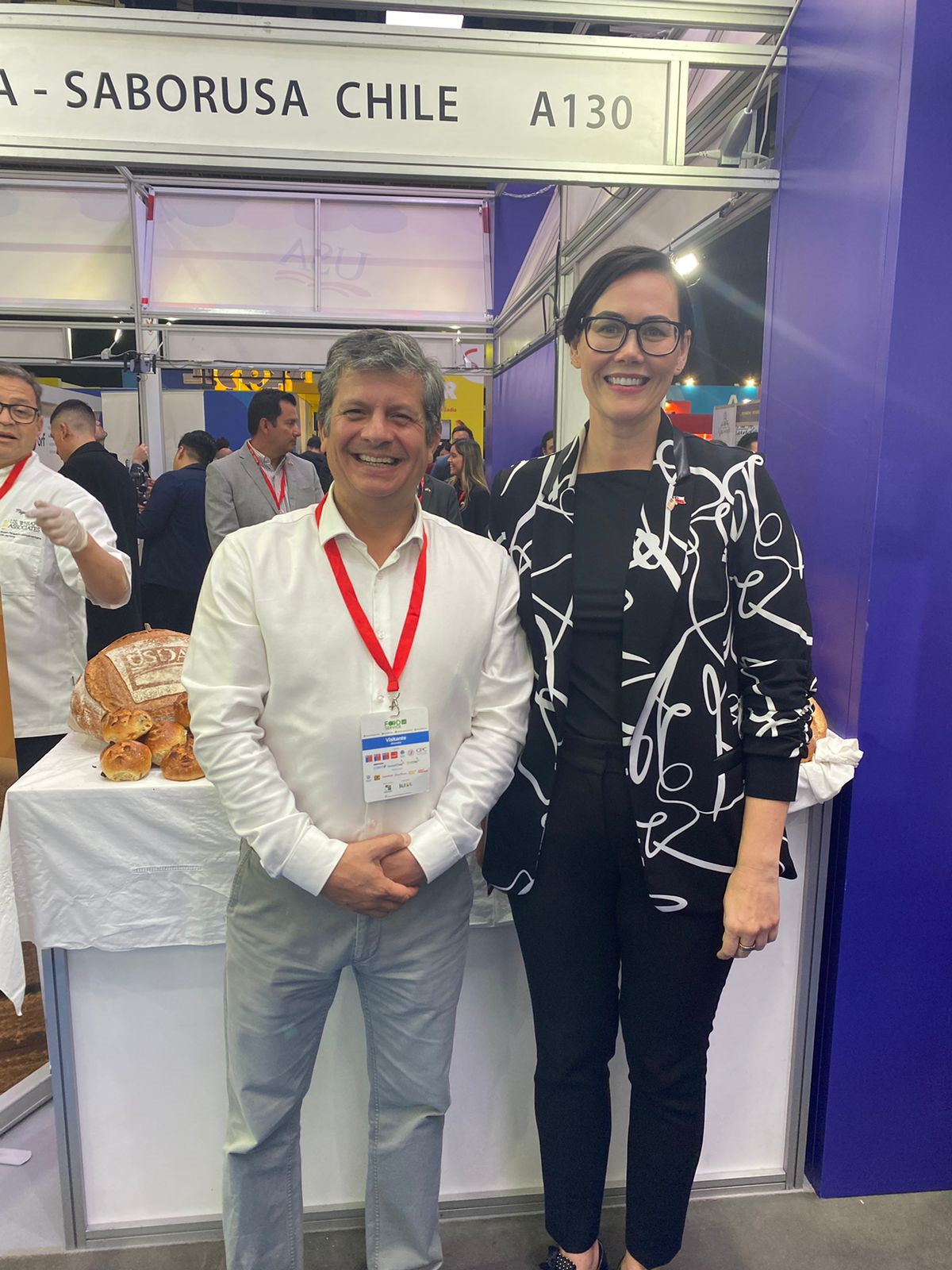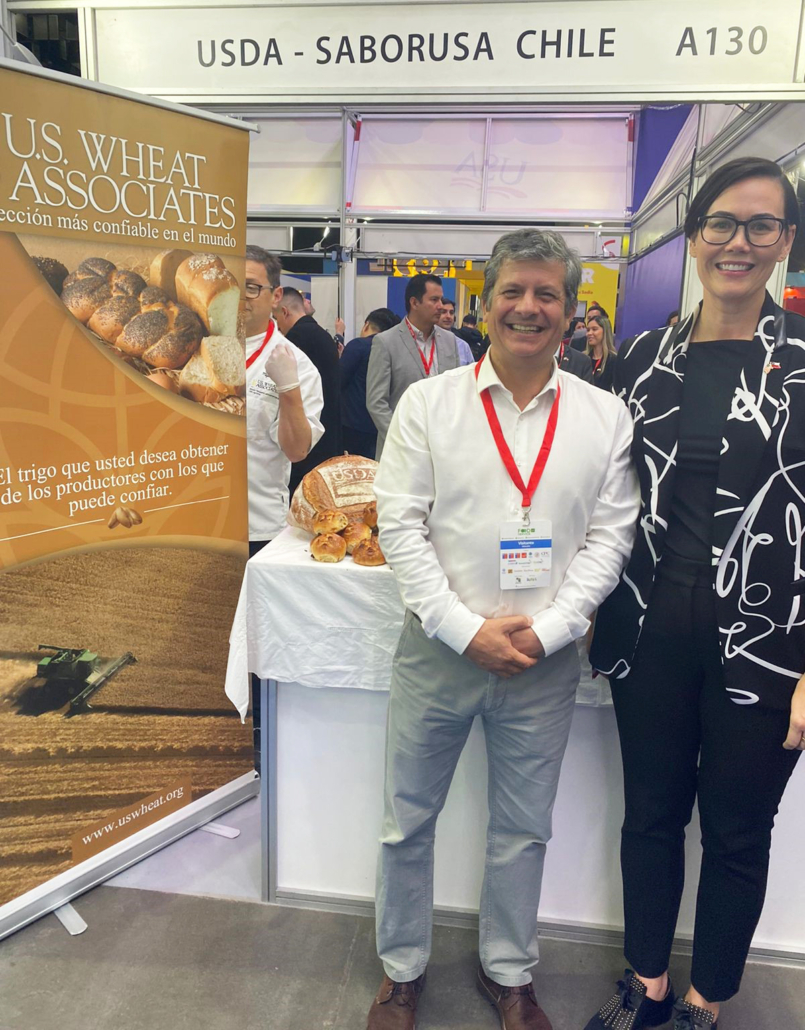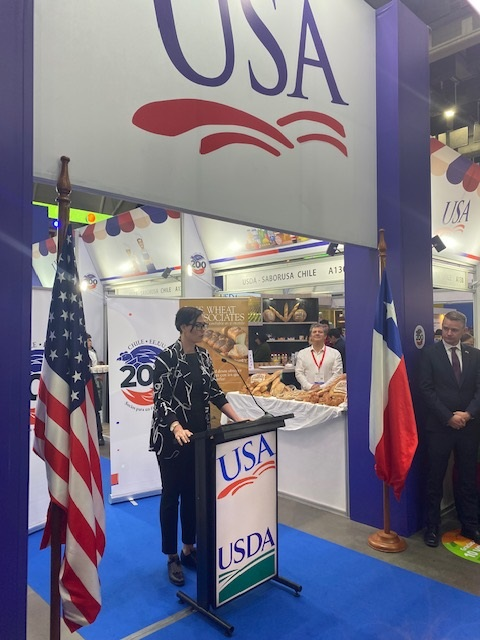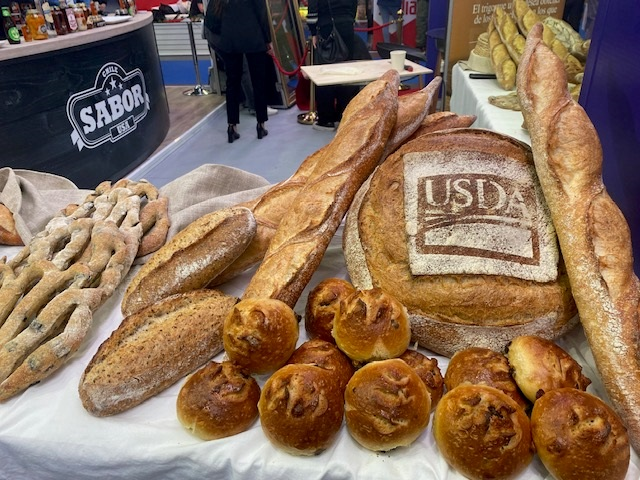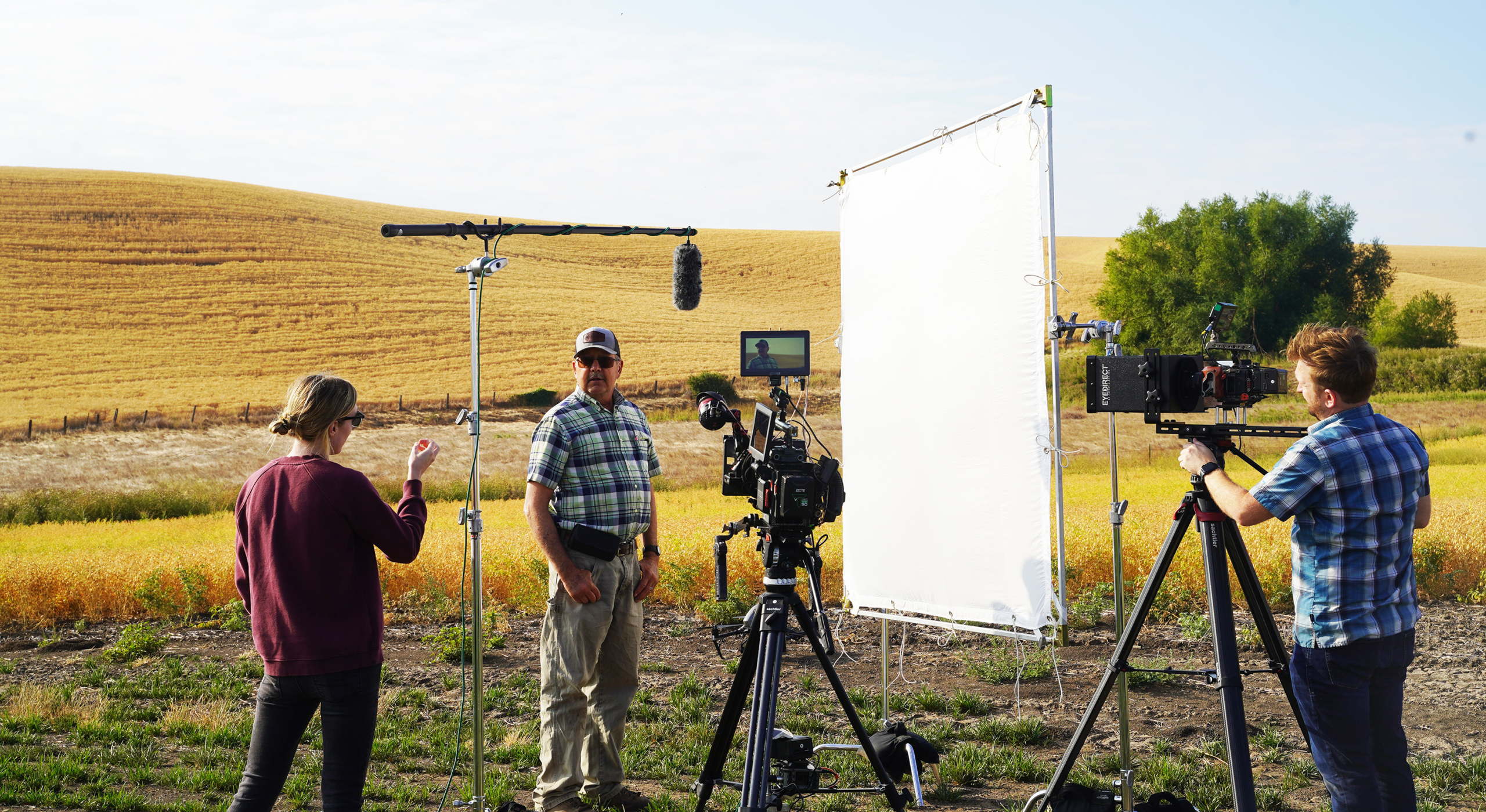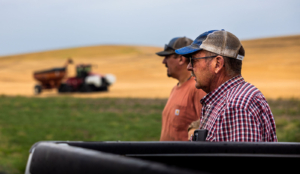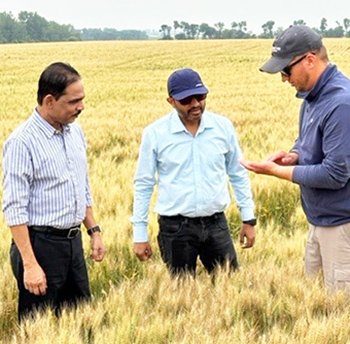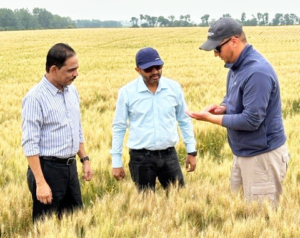
USW Director of Communications Ralph Loos examines a field of hard red spring wheat in Traill County, North Dakota during the 2024 Hard Red Spring and Durum Wheat Tour.
After three days of analyzing, counting and calculating, participants came to a common conclusion: North Dakota wheat farmers may have produced their best crop in decades.
That was the general feeling as the Wheat Quality Council’s 2024 Hard Red Spring and Durum Wheat Tour wrapped up on July 25. More than 40 millers, bakers, grain company representatives, members of the media and government employees from around the country teamed up to examine more than 250 fields of hard red spring (HRS) and durum wheat in the host state – as well as a small number of fields in neighboring Minnesota and South Dakota.
A Three-Day Tour of Wheat
After three days of touring, the average HRS wheat yield was projected at 54.5 bushels per acre, up from 47.4 bushels last year. The durum fields visited had a projected yield of 45.3 bushels per acre, up from the 2023 projections of 43.9. Two hard red winter (HRW) wheat fields on the tour had a projected yield of 51.4 bushels per acre.

An educational session at the North Dakota State University’s Agronomy Seed Farm kicked off this year’s tour.
Optimism and Patience
Dave Green, Executive Vice President of the Wheat Quality Council, said weather conditions in the weeks up until harvest will determine if the 2024 North Dakota wheat crop is record-breaking.
But there is plenty of room for optimism.
“I don’t ever remember the crops being this uniformly good all over the state,” Green, who again was assisted by Brian Walker of BW Consulting and tour statistician Rita Ott of General Mills, said. “We can’t get ahead of ourselves until harvest begins and farmers begin taking wheat out of the fields. At this point, things look really good for some of the best yields we have seen in a number of years.”
For the most part, HRS fields in North Dakota were 3 to 6 weeks from being ready for harvest.
As is typical, a small number of reports of head blight (more commonly referred to as “scab”), stripe rust, wheat stem maggot, and insects were included in reports. However, also noted in those reports was the fact farmers had made timely applications of pesticide sprays to avert effects from pests. The timing of harvest will determine how much of an effect scab has on realized yields.
Variety of Participants
The tour began on July 22 with a training session and a visit to North Dakota State University’s Agronomy Seed Farm. On July 23, participants gathered in Fargo, North Dakota and were broken into teams. Those teams fanned out across the state to analyze this year’s crop. Director of Communications Ralph Loos represented U.S. Wheat Associates (USW) on the tour.
“The thing that makes this tour work so well each year is the fact that you have a collection of people from different parts of the wheat industry who are all interested in the same thing – learning about the crop and all of the things that factor into the success of the crop,” Loos said. “It’s a wide cross-section of people, with varying levels of experience. But I think everyone who participates goes away learning something they did not know before the tour. For U.S. Wheat, it was especially nice to see staff from USDA’s Foreign Agricultural Service (FAS) on the tour.”

Dave Green, Executive Vice President of the Wheat Quality Council, helps prepare participants in the 2024 Hard Spring and Durum Wheat Quality Tour during a visit to visit to North Dakota State University’s Agronomy Seed Farm.





